John Elder Robison's Blog, page 6
December 15, 2015
Are Geeks Narcissists? A PLOS ONE article asks the question . . .
In a recent PLOS ONE journal article, researchers Jessica McCain, Brittany Gentile, W. Keith Campbell posit that perhaps geek culture is a way of sustaining a narcissistic self-view.
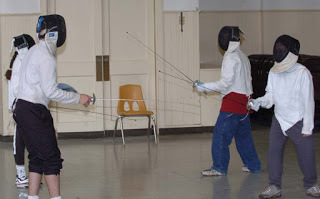 Geeks with Swords (c) JE RobisonWhile I agree that it might look that way on the surface, I think their conclusion is wrong; founded upon an incorrect or incomplete understanding of geeks and geek culture. With all due respect, I suggest that perhaps the authors made an all-too-common mistake. They interpreted observations of self-focused behavior as narcissism, when they were actually seeing autistic traits; either autism or the much more common "broader autism phenotype." As a result, the article as it stands is harmful to autistic culture, and geek culture, because it perpetuates a wrong stereotype.
Geeks with Swords (c) JE RobisonWhile I agree that it might look that way on the surface, I think their conclusion is wrong; founded upon an incorrect or incomplete understanding of geeks and geek culture. With all due respect, I suggest that perhaps the authors made an all-too-common mistake. They interpreted observations of self-focused behavior as narcissism, when they were actually seeing autistic traits; either autism or the much more common "broader autism phenotype." As a result, the article as it stands is harmful to autistic culture, and geek culture, because it perpetuates a wrong stereotype.
The article focuses on the geek community’s outsized interest in online gaming, massive multiplayer games, role playing games, and science fiction, or comics or fantasy. Games and conferences have grown so large that they’ve become major cultural events. And people naturally draw conclusions about those who attend, and how they may be different from others in the community.
It’s well known that we geeks get lost in our own worlds, and in fantasy worlds of various sorts. The question here is, why does that happen? If a person is fully aware of the wider world, but chooses to ignore outside signals and focuses on himself that is narcissistic. If we do that because we are oblivious to much of what goes on around us, and we are blind to the signals of others, that is an autistic spectrum trait.
Most autistic children experience bullying and mistreatment, growing up. That is an unfortunately consequence of acting differently, and being insensitive to other kids. As they get older, autistic kids often withdraw from social contact, even as they desire it. They may gravitate to online communities, where they are less likely to appear different or disabled, and in fact may seem exceptional due to their intense focus.
To a large extent, that explains the path autistics follow into gaming and fantasy. It’s founded on isolation and social disability, and narcissism has no part of that picture. Yet narcissism is often assumed by observers, incorrectly. That is a natural reaction for a person who is not autistic. They see various signals from other people, and it never occurs to them that an autistic person next to them might be oblivious to the same signals. So when the autistic person fails to respond as they do, they assume his lack of response is deliberate and informed, when in fact it’s not.
In comparison, narcissism is saying “I see you, but I love myself more than you or anyone else.” That is seldom the situation for autistic people, who tend to suffer from the opposite – chronic self-loathing and poor self-esteem. When it comes to self-focus, autistic people do so because they are not fully aware of the people around them, because they have a communication disability. That is the essence of autism.
After reading this essay in original form, BU Psychology Professor Catherine Caldwell-Harris pointed out that geeks (or nerds as others say) are also drawn into online worlds and gaming in part because they have strong systemizing tendencies, which are traits of the broader autism phenotype. Cambridge researcher Simon Baron Cohen has written a lot about systematizers and that kind of thinking.
My experience as an autistic adult informs my interpretation of geek cultural observations. As an autistic person I know all too well what it’s like to miss the signals others around me see, and suffer as a result. Am I suggesting every geek is autistic? Of course not. What I am suggesting is that a great many geeks have some autistic traits and a considerable number are on the spectrum. And I’m sure a few are narcissistic too, but I believe autism is the best explainer of the behaviors described in the paper.
We should be very careful about applying labels like narcissist to large swaths of the population. It’s particularly noteworthy that the approaches one would take to deal with narcissism are fundamentally different from what one would use to address autism. Treating autistics as narcissists will not only be counterproductive, it will be harmful.
John Elder Robison
John Elder Robison is an autistic adult and advocate for people with neurological differences. He's the author of Look Me in the Eye, Be Different, Raising Cubby, and the forthcoming Switched On. He's served on the Interagency Autism Coordinating Committee of the US Dept of Health and Human Services and many other autism-related boards. He's co-founder of the TCS Auto Program (A school for teens with developmental challenges) and he’s the Neurodiversity Scholar in Residence at the College of William & Mary in Williamsburg, Virginia.
The opinions expressed here are his own. There is no warranty expressed or implied. While reading this essay may give you food for thought, actually printing and eating it may make you sick.(c) 2007-2011 John Elder Robison
 Geeks with Swords (c) JE RobisonWhile I agree that it might look that way on the surface, I think their conclusion is wrong; founded upon an incorrect or incomplete understanding of geeks and geek culture. With all due respect, I suggest that perhaps the authors made an all-too-common mistake. They interpreted observations of self-focused behavior as narcissism, when they were actually seeing autistic traits; either autism or the much more common "broader autism phenotype." As a result, the article as it stands is harmful to autistic culture, and geek culture, because it perpetuates a wrong stereotype.
Geeks with Swords (c) JE RobisonWhile I agree that it might look that way on the surface, I think their conclusion is wrong; founded upon an incorrect or incomplete understanding of geeks and geek culture. With all due respect, I suggest that perhaps the authors made an all-too-common mistake. They interpreted observations of self-focused behavior as narcissism, when they were actually seeing autistic traits; either autism or the much more common "broader autism phenotype." As a result, the article as it stands is harmful to autistic culture, and geek culture, because it perpetuates a wrong stereotype.The article focuses on the geek community’s outsized interest in online gaming, massive multiplayer games, role playing games, and science fiction, or comics or fantasy. Games and conferences have grown so large that they’ve become major cultural events. And people naturally draw conclusions about those who attend, and how they may be different from others in the community.
It’s well known that we geeks get lost in our own worlds, and in fantasy worlds of various sorts. The question here is, why does that happen? If a person is fully aware of the wider world, but chooses to ignore outside signals and focuses on himself that is narcissistic. If we do that because we are oblivious to much of what goes on around us, and we are blind to the signals of others, that is an autistic spectrum trait.
Most autistic children experience bullying and mistreatment, growing up. That is an unfortunately consequence of acting differently, and being insensitive to other kids. As they get older, autistic kids often withdraw from social contact, even as they desire it. They may gravitate to online communities, where they are less likely to appear different or disabled, and in fact may seem exceptional due to their intense focus.
To a large extent, that explains the path autistics follow into gaming and fantasy. It’s founded on isolation and social disability, and narcissism has no part of that picture. Yet narcissism is often assumed by observers, incorrectly. That is a natural reaction for a person who is not autistic. They see various signals from other people, and it never occurs to them that an autistic person next to them might be oblivious to the same signals. So when the autistic person fails to respond as they do, they assume his lack of response is deliberate and informed, when in fact it’s not.
In comparison, narcissism is saying “I see you, but I love myself more than you or anyone else.” That is seldom the situation for autistic people, who tend to suffer from the opposite – chronic self-loathing and poor self-esteem. When it comes to self-focus, autistic people do so because they are not fully aware of the people around them, because they have a communication disability. That is the essence of autism.
After reading this essay in original form, BU Psychology Professor Catherine Caldwell-Harris pointed out that geeks (or nerds as others say) are also drawn into online worlds and gaming in part because they have strong systemizing tendencies, which are traits of the broader autism phenotype. Cambridge researcher Simon Baron Cohen has written a lot about systematizers and that kind of thinking.
My experience as an autistic adult informs my interpretation of geek cultural observations. As an autistic person I know all too well what it’s like to miss the signals others around me see, and suffer as a result. Am I suggesting every geek is autistic? Of course not. What I am suggesting is that a great many geeks have some autistic traits and a considerable number are on the spectrum. And I’m sure a few are narcissistic too, but I believe autism is the best explainer of the behaviors described in the paper.
We should be very careful about applying labels like narcissist to large swaths of the population. It’s particularly noteworthy that the approaches one would take to deal with narcissism are fundamentally different from what one would use to address autism. Treating autistics as narcissists will not only be counterproductive, it will be harmful.
John Elder Robison
John Elder Robison is an autistic adult and advocate for people with neurological differences. He's the author of Look Me in the Eye, Be Different, Raising Cubby, and the forthcoming Switched On. He's served on the Interagency Autism Coordinating Committee of the US Dept of Health and Human Services and many other autism-related boards. He's co-founder of the TCS Auto Program (A school for teens with developmental challenges) and he’s the Neurodiversity Scholar in Residence at the College of William & Mary in Williamsburg, Virginia.
The opinions expressed here are his own. There is no warranty expressed or implied. While reading this essay may give you food for thought, actually printing and eating it may make you sick.(c) 2007-2011 John Elder Robison

Published on December 15, 2015 08:42
December 8, 2015
Congressionally Mandated Autism Research and the Need for Community Reviewers
Last week I went to Washington to review autism research proposals for the Department of Defense. Most people have no idea Defense does autism research so I’d like to take a moment to explain . . .
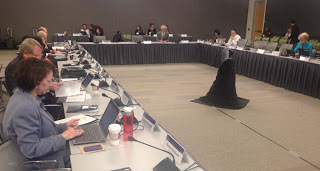 A NIH Autism committee in session (DoD is similar)The proposals I reviewed are part of a program called the Congressionally Directed Medical Research Programs. They are part of what’s popularly called the peace dividend. That is, when we are not spending money to fight wars, some of that money is spent on medical research instead.
A NIH Autism committee in session (DoD is similar)The proposals I reviewed are part of a program called the Congressionally Directed Medical Research Programs. They are part of what’s popularly called the peace dividend. That is, when we are not spending money to fight wars, some of that money is spent on medical research instead.
In FY14 the program invested one billion dollars in 3,500 research projects. Six million of those dollars went to autism, and the allotment for this year is similar.
The exact nature of the proposals I looked at is confidential, to protect the intellectual property of the scientists. But what I can say is this: All the proposals were for treatment trials, each of which was meant to have a high impact on the target population. Some were drug trials, some were behavioral therapies, and others were tests of devices or tools to assist us.
The winners of the awards will be announced next year. You can read about last years winners on the CDMRP website now.
There will be another round of research reviews next year. Proposals are typically evaluated a couple times a year. And that is where you may come in. I was the only autistic person reviewing autism grants. CDMRP has a mandate to get community input into research, but they do not have a reservoir of autistic people to do this.
They do have parent reviewers, but non-autistic parents (well meaning as they are) are third person reviewers, not first person reviewers. Autistic parents (like me) are actual autistic reviewers, which is what they need.
This does not mean there is no role for parents. Quite the contrary. Parents are the best reviewers to speak for those children who cannot speak for themselves. But autism is a lifetime condition, and most autistic people can speak for themselves, and in this context they/we should do so. The ideal reviewer is an autistic parent with an autistic child, because that parent will know both perspectives. The ideal review committee will have all points on the spectrum represented by a group of community members.
As it happened, there was a much larger cancer review program going on when I was there. EVERY community reviewer for that program – and there were a bunch – was an actual person with cancer.
If you are an autistic person with a desire to help the community I urge you to volunteer to be a reviewer for programs like these. The science officers NEED input from actual autistic people on what matters to us, what may work, and what won’t. You don’t need in depth knowledge of the science (though all knowledge helps) but you do need to think about research priorities and ethics.
I’ve put a link to the program here. Check it out and let me know what you think. Can you be a reviewer?(c) 2007-2011 John Elder Robison
 A NIH Autism committee in session (DoD is similar)The proposals I reviewed are part of a program called the Congressionally Directed Medical Research Programs. They are part of what’s popularly called the peace dividend. That is, when we are not spending money to fight wars, some of that money is spent on medical research instead.
A NIH Autism committee in session (DoD is similar)The proposals I reviewed are part of a program called the Congressionally Directed Medical Research Programs. They are part of what’s popularly called the peace dividend. That is, when we are not spending money to fight wars, some of that money is spent on medical research instead.In FY14 the program invested one billion dollars in 3,500 research projects. Six million of those dollars went to autism, and the allotment for this year is similar.
The exact nature of the proposals I looked at is confidential, to protect the intellectual property of the scientists. But what I can say is this: All the proposals were for treatment trials, each of which was meant to have a high impact on the target population. Some were drug trials, some were behavioral therapies, and others were tests of devices or tools to assist us.
The winners of the awards will be announced next year. You can read about last years winners on the CDMRP website now.
There will be another round of research reviews next year. Proposals are typically evaluated a couple times a year. And that is where you may come in. I was the only autistic person reviewing autism grants. CDMRP has a mandate to get community input into research, but they do not have a reservoir of autistic people to do this.
They do have parent reviewers, but non-autistic parents (well meaning as they are) are third person reviewers, not first person reviewers. Autistic parents (like me) are actual autistic reviewers, which is what they need.
This does not mean there is no role for parents. Quite the contrary. Parents are the best reviewers to speak for those children who cannot speak for themselves. But autism is a lifetime condition, and most autistic people can speak for themselves, and in this context they/we should do so. The ideal reviewer is an autistic parent with an autistic child, because that parent will know both perspectives. The ideal review committee will have all points on the spectrum represented by a group of community members.
As it happened, there was a much larger cancer review program going on when I was there. EVERY community reviewer for that program – and there were a bunch – was an actual person with cancer.
If you are an autistic person with a desire to help the community I urge you to volunteer to be a reviewer for programs like these. The science officers NEED input from actual autistic people on what matters to us, what may work, and what won’t. You don’t need in depth knowledge of the science (though all knowledge helps) but you do need to think about research priorities and ethics.
I’ve put a link to the program here. Check it out and let me know what you think. Can you be a reviewer?(c) 2007-2011 John Elder Robison

Published on December 08, 2015 07:48
December 7, 2015
Is Change Coming at Autism Speaks?
Today’s news that autists Stephen Shore and Valerie Paradiz have joined the Autism Speaks Board of Directors came as a surprise to many. The announcement follows on the heels of other big news from that organization:Mr. Wright has stepped down as chairman and resigned from the board;Mrs. Wright has stepped back from the organization after a cancer diagnosis;President Liz Feld has announced she will be leaving soon;Chief Science Officer Rob Ring has announced his resignation.
It’s possible that a new day is about to dawn for the largest and most controversial autism organization. For the first time, they have put actual autistic people in positions of power. They may take more positive steps when the top management is replaced (time will tell.)
I certainly hope the organization can change its focus to one that is more constructive, and less demeaning to autistics. I hope we’ve seen the last of the ugly missives like “I am Autism,” Suzanne Wright’s offensive 2013 editorials, and the suggestion that autistic people are somehow MISSING (we’re not.) They’ve got a powerful PR machine. Maybe they can use it to say the right things, for a change.
It’s harder to raise money when there are no villains and demons, but it can be done. Will they rise to this challenge, or fall back on the old ways?
I’m not an insider, so I have no special knowledge, but I have some concerns about the board and some big donors. In the past, a significant amount of Autism Speaks funding came from people with anti-vaccine agendas, and followers of fringe or discredited science. How much influence do those people hold today? I don’t know, but it worries me in light of their history.
It also concerns me that the volunteer base is so heavily dominated by parents. That’s really what the group is: AUTISM PARENTS. Can they embrace actual autistics to truly begin to speak for the community? There are a few autistic volunteers there now, and that’s a good sign.
After I wrote this, several people wrote me privately to remark on the role of parents. I've edited my post to add the following, to clarify that my words were not anti parent; simply a recognition that the actual autistics come first in an autism advocacy group. An autism parent group, on the other hand, is the opposite.
Autism Speaks has always portrayed itself as the former while effectively being the latter.
With those words, I don't want to make parents out as demons or villains. They have made very real contributions to the autism movement, and in fact we'd be nowhere without them. But autistic kids grow into autistic adults, and for such a large organization, the percentage representation of actual autistics involved with Autism Speaks is far lower than it should be. My words are in no way an indictment of parents, simply a recognition that Autism advocacy is first and foremost about Autistic people, and secondarily about families. Both need support, and their wants and needs may sometimes differ and even be at odds.
I wish Valerie and Stephen all the success in the world in moving Autism Speaks onto a healthier course. They join Kerry Magro, Amy Gravino, and the other autistic volunteers who have struggled to turn that ship these past few years. The organization’s fundraising power could do tremendous good, if redirected in a constructive way. Over the past decade, too much money has been wasted on nonproductive science, and too little spent on real deliverable benefit to the community. Critics have said this for years. With the leadership stepping down, there’s an opportunity for the next management to seek a new direction.
Autism Speaks would be wise to focus on this goal:
Develop tools and therapies that benefit the people who live with autism today.
Let go of the genetics, and the pharma studies that may pay off for the next generation. Autism family concerns are today. If the families who funded the science you've done so far knew what it got them, would they fund it again? Or would they look to someone who truly has their interests at heart?
I hope they succeed.
Autism Speaks has taken a step by appointing two autistics to the board. Let's see what happens now. Will Autism Speaks Listen?
(c) 2015 John Elder Robison
John Elder Robison is an autistic adult and advocate for people with neurological differences. He's the author of Look Me in the Eye, Be Different, Raising Cubby, and the forthcoming Switched On. He's served on the Interagency Autism Coordinating Committee of the US Dept of Health and Human Services and many other autism-related boards. He's co-founder of the TCS Auto Program (A school for teens with developmental challenges) and he’s the Neurodiversity Scholar in Residence at the College of William & Mary in Williamsburg, Virginia.
The opinions expressed here are his own. There is no warranty expressed or implied. While reading this essay may give you food for thought, actually printing and eating it may make you sick.(c) 2007-2011 John Elder Robison
It’s possible that a new day is about to dawn for the largest and most controversial autism organization. For the first time, they have put actual autistic people in positions of power. They may take more positive steps when the top management is replaced (time will tell.)
I certainly hope the organization can change its focus to one that is more constructive, and less demeaning to autistics. I hope we’ve seen the last of the ugly missives like “I am Autism,” Suzanne Wright’s offensive 2013 editorials, and the suggestion that autistic people are somehow MISSING (we’re not.) They’ve got a powerful PR machine. Maybe they can use it to say the right things, for a change.
It’s harder to raise money when there are no villains and demons, but it can be done. Will they rise to this challenge, or fall back on the old ways?
I’m not an insider, so I have no special knowledge, but I have some concerns about the board and some big donors. In the past, a significant amount of Autism Speaks funding came from people with anti-vaccine agendas, and followers of fringe or discredited science. How much influence do those people hold today? I don’t know, but it worries me in light of their history.
It also concerns me that the volunteer base is so heavily dominated by parents. That’s really what the group is: AUTISM PARENTS. Can they embrace actual autistics to truly begin to speak for the community? There are a few autistic volunteers there now, and that’s a good sign.
After I wrote this, several people wrote me privately to remark on the role of parents. I've edited my post to add the following, to clarify that my words were not anti parent; simply a recognition that the actual autistics come first in an autism advocacy group. An autism parent group, on the other hand, is the opposite.
Autism Speaks has always portrayed itself as the former while effectively being the latter.
With those words, I don't want to make parents out as demons or villains. They have made very real contributions to the autism movement, and in fact we'd be nowhere without them. But autistic kids grow into autistic adults, and for such a large organization, the percentage representation of actual autistics involved with Autism Speaks is far lower than it should be. My words are in no way an indictment of parents, simply a recognition that Autism advocacy is first and foremost about Autistic people, and secondarily about families. Both need support, and their wants and needs may sometimes differ and even be at odds.
I wish Valerie and Stephen all the success in the world in moving Autism Speaks onto a healthier course. They join Kerry Magro, Amy Gravino, and the other autistic volunteers who have struggled to turn that ship these past few years. The organization’s fundraising power could do tremendous good, if redirected in a constructive way. Over the past decade, too much money has been wasted on nonproductive science, and too little spent on real deliverable benefit to the community. Critics have said this for years. With the leadership stepping down, there’s an opportunity for the next management to seek a new direction.
Autism Speaks would be wise to focus on this goal:
Develop tools and therapies that benefit the people who live with autism today.
Let go of the genetics, and the pharma studies that may pay off for the next generation. Autism family concerns are today. If the families who funded the science you've done so far knew what it got them, would they fund it again? Or would they look to someone who truly has their interests at heart?
I hope they succeed.
Autism Speaks has taken a step by appointing two autistics to the board. Let's see what happens now. Will Autism Speaks Listen?
(c) 2015 John Elder Robison
John Elder Robison is an autistic adult and advocate for people with neurological differences. He's the author of Look Me in the Eye, Be Different, Raising Cubby, and the forthcoming Switched On. He's served on the Interagency Autism Coordinating Committee of the US Dept of Health and Human Services and many other autism-related boards. He's co-founder of the TCS Auto Program (A school for teens with developmental challenges) and he’s the Neurodiversity Scholar in Residence at the College of William & Mary in Williamsburg, Virginia.
The opinions expressed here are his own. There is no warranty expressed or implied. While reading this essay may give you food for thought, actually printing and eating it may make you sick.(c) 2007-2011 John Elder Robison

Published on December 07, 2015 19:26
November 17, 2015
Thoughts on the Autism Community's needs - Nov 17 IACC presentation
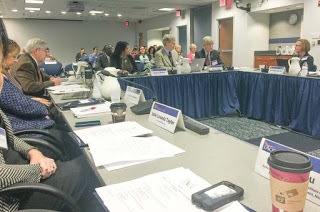
I’d like to take a moment to offer some thoughts on the written public comment submitted to this November 2015 meeting of the Interagency Autism Coordinating Committee. Prior to this meeting we received 71 comments, which are available online at the IACC site, iacc.hhs.gov. This reflects the long time that has passed since our last meeting.
The overriding theme of the comments is dissatisfaction at how little we have accomplished. Every year we publish a summary of advances, but very little of what we describe actually benefits families. Parents have seen children grow to adulthood while we’ve delivered nothing new to help them. If you take away one thing from the comments it would be this: We would be very wise to significantly shorten our research-to-consumer translation timelines and focus on therapies and treatments that will be impactful soon, not to the next generation.
We’ve spent millions of dollars and years of time look for the foundation causes of profound disability. We’ve kept that primary course even with the emergence of knowledge that autism is not a progressive disease, and for many of us, the cure model is not applicable. Yet autistic people are stressed and suffering. What’s wrong with that picture? We need research into benefits we can use now.
Research into relief of suffering from various causes, and research into teaching accommodation skills is often fundamentally different from basic research for a cure.
To draw an analogy, in the years after WWII, one group of doctors studied the cause of polio, while another group developed better wheel chairs and braces. Today, we recognize that both groups made great contributions. Thanks to basic research, polio is no longer an American public health problem, yet the accommodation work the other less well-known doctors did finds even wider use today for other disabilities. The same is likely true for work to be done in autism accommodation.
The next point I’d like to speak to is the large group of commenters who express the view that vaccines cause autism. In the previous IACC, when I saw the very high percentage of vaccine commenters, I asked the committee if we have research into what the concerns of autistic people and their families are. Indeed we do have such research, and possible vaccine injury does not top the list, even though it tops the list of comments here. Research shows us the main community concerns are solving the problems autistic people and their families live with today. Indeed, many commenters who raise the vaccine issue also discuss quality of life concerns.
Several commenters describe autism as an emergent epidemic or a fast-growing public health crisis. This week we have a new National Health Statistics report that puts the prevalence of autism at 2.25%, a striking rise from the 2013 estimate of 1.25%. But is that evidence of more autism? The authors of the study point out that the total prevalence of all developmental differences was constant across survey years. So the increase of autism reports was matched by a decrease in other conditions. In a similar vein, we have debated for years how much – if any – real increase in autism exists, as compared to increased awareness and expanded scope of definition. I think this is a area for study but the most recent report is not in my opinion cause for alarm as it probably represents a change in reporting, not a change in underlying autism prevalence.
Recent studies like Brugha have shown a fairly constant prevalence of autism in populations over the past 70 years, when everyone is screened with the same current tools. Those studies also highlight the many alternate diagnoses older autistics were given, and the fact that many had no diagnoses at all. That said, those studies do not rule out the possibility of some recent increase from other causes, and when we look at the sharp rise in other childhood immune issues like peanut allergy and bee sting toxicity we would be wise to keep an open mind.
In the last IACC, we had a workshop on co-occurring conditions. We recognized the reality that some mix of anxiety, depression, intestinal distress, and seizures affects the majority of autistic people – me included. And there are other complications that are less universal but still common. It’s time to address the reasons those things occur so often in autistic people and do something about it.
I think we also need to be open minded about how we address the myriad issues of autism. Some things will be best addressed by researching a cure (for example – epilepsy and profound intellectual disability) while other challenges (speech) may be addressed by technology as others (making friends) are addressed through learning and therapy and some (GI for example) may be addressed by diet and medication. Societal accommodation also has a significant role.
Many commenters posit possible causes of autism – asphyxia at birth, mercury in vaccines, other unspecified environmental toxins. At the same time, we confront research that suggests that a substantial number of autistic people come by our autism naturally, though inheritance of a stable set of genetic differences. How do we balance those things? We have a very polarized community with one extreme arguing that autism is a social problem that primarily needs acceptance, and others arguing it is a medical crisis that needs a cure. Might the spectrum contain elements of both? Part of finding balance is recognizing that we are probably dealing with many different autisms, or many foundations for similar observed behaviors.
As an autistic adult and member of this committee, I believe we have a duty to identify and remediate all causes of neurological injury that cause autism-like behaviors. I also support the genetic and basic biological research but I want to be clear – I see that standing beside a primary mission of research to maximize quality of life for today’s autistic population. I hope we can agree on the primacy of that mission.
We must recognize that taxpayers fund our work, and we are morally responsible to heed their wishes when we spend their dollars. Those taxpayers want action now, and most of our present research does not offer the potential to do that. We must shift a significant part of our budget to development and deployment of therapies that will help in three years, not thirty.
In the last IACC, I stressed the need to shift additional focus to the issues of autistic adults. Autism is a lifelong condition, yet our research is still almost exclusively focused on children. At any given time, two-thirds of the autistic population are adults and it’s high time that group’s concerns were addressed. Why are autistic adults at greater risk of mortality? What are we going to do to help the large unemployed and underemployed autistic population find productive work? Can we adapt therapies that help teens make friends to adults? Can we develop a workable housing plan for when parents are gone? There are many, many questions and few answers.
I believe another of our top priorities must be to address causes of death from autism. With the knowledge of today, those risks come in several forms:- Suicide, for bright socially isolated autistics – particularly teens- Death by misadventure when more impaired autistics wander and drown, or die in accidents- Death by neglect, when language impairments prevent autistics from communicating life-threatening medical issues to caregivers.- Death from complications of seizures.
There is another adult issue that needs to be addressed, and that is respite care for families. The Internet is filled with stories of exhausted parents who are pushed to the breaking point and beyond by the stress of family autism.
Those of us who have the honor of serving on this committee should recognize our duty to serve the entire autistic population – not just the part of the spectrum that touches our own lives. In particular, I believe those of us with strong voices have a duty to speak out for others who cannot express their own concerns to this committee. The group that best exemplifies this is our minimally verbal and non verbal autistic population. As more and more autistic self advocates speak out, I worry that those who cannot self advocate will be forgotten. It’s up to us to ensure that does not happen.
Parents of minimally verbal autistics live in fear for their children when they are gone. They live in fear for their children when they are out of their sight. They are right to be afraid, and it’s of great concern to me that we have done so little for this group. Let’s be conscious of all autistics, not just the ones who speak before us.
I believe this touches on a limitation of this committee and the agencies that research autism. Relief for minimally verbal people may not come through medical science. Rather, it may come through the work of engineers and others not traditionally associated with medical research.
I’ve offered you a lot of thoughts in this presentation. I hope you share my sense of urgency as regards delivering help to families and autistic individuals. I also hope you see that we don’t have an all or nothing situation here. It’s a question of balance, and pulling together.
At the same time I hope we can all push for a more accepting and accommodating world. Neurodiversity initiatives at schools like W&M are making higher education more accessible to autistic people, and we are teaching all our students the value of autistic people. Employment initiatives like SAP and Specialisterne are leading the way in employing autistic people in today’s high tech world. I hope this is the start of a much larger groundswell of support and acceptance.
John Elder Robison
JR note - This text follows my presentation fairly closely. There is some material here that I did not read to the group due to time constraint.
All words and images (c) 2015 John Elder Robison
John Elder Robison is an autistic adult and advocate for people with neurological differences. He's the author of Look Me in the Eye, Be Different, Raising Cubby, and the forthcoming Switched On. He's served on the Interagency Autism Coordinating Committee of the US Dept of Health and Human Services and many other autism-related boards. He's co-founder of the TCS Auto Program (A school for teens with developmental challenges) and he’s the Neurodiversity Scholar in Residence at the College of William & Mary in Williamsburg, Virginia.
The opinions expressed here are his own. There is no warranty expressed or implied. While reading this essay may give you food for thought, actually printing and eating it may make you sick.
(c) 2007-2011 John Elder Robison

Published on November 17, 2015 19:38
November 2, 2015
Details for the November 17 2015 IACC autism meeting
This is copied directly from the IACC announcement. The meeting will be open to any who wish to attend, though registration is required if you want to comment. You can also mail in comments, and you can watch the proceedings by NIH webcast or listen on conference call:
I hope to see some of you in a few weeks.
* * *
Please join us for an IACC Full Committee meeting that will take place on Tuesday, November 17, 2015 from 9:30 a.m. to 5:00 p.m. ET at Fishers Lane Conference Center5635 Fishers Lane, Room 508/509/510. Registration will begin at 8:30a.m. The meeting will also be available by live videocast for remote viewing.
Agenda: Introduction of the members of the new committee and discuss business, agency updates and issues related to autism spectrum disorder (ASD) research and services activities.
Meeting location:
Fishers Lane Conference Center 5635 Fishers Lane, Room 508/509/510Rockville, MD 20852
Nearest Metro stop: Twinbrook Metro Station – Red Line
In the interest of security, visitors will be asked to show one form of identification (for example, a government-issued photo ID, driver’s license, or passport).
Pre-Registration :The meeting will be open to the public and pre-registration is recommended. Seating will be limited to the room capacity and seats will be on a first come, first served basis, with expedited check-in for those who are pre-registered. Online registration will be opening shortly. Please check the IACC website for updates.
Public Comment – Deadlines: Notification of intent to present oral comments: Monday, November 9th by 5:00p.m. ETSubmission of written/electronic statement for oral comments: Tuesday, November 10th by 5:00p.m. ETSubmission of written comments: Tuesday, November 10th by 5:00p.m. ET
Remote Access: The meeting will be remotely accessible by videocast (http://videocast.nih.gov/) and conference call. Members of the public who participate using the conference call phone number will be in listen-only mode.
(c) 2007-2011 John Elder Robison
I hope to see some of you in a few weeks.
* * *
Please join us for an IACC Full Committee meeting that will take place on Tuesday, November 17, 2015 from 9:30 a.m. to 5:00 p.m. ET at Fishers Lane Conference Center5635 Fishers Lane, Room 508/509/510. Registration will begin at 8:30a.m. The meeting will also be available by live videocast for remote viewing.
Agenda: Introduction of the members of the new committee and discuss business, agency updates and issues related to autism spectrum disorder (ASD) research and services activities.
Meeting location:
Fishers Lane Conference Center 5635 Fishers Lane, Room 508/509/510Rockville, MD 20852
Nearest Metro stop: Twinbrook Metro Station – Red Line
In the interest of security, visitors will be asked to show one form of identification (for example, a government-issued photo ID, driver’s license, or passport).
Pre-Registration :The meeting will be open to the public and pre-registration is recommended. Seating will be limited to the room capacity and seats will be on a first come, first served basis, with expedited check-in for those who are pre-registered. Online registration will be opening shortly. Please check the IACC website for updates.
Public Comment – Deadlines: Notification of intent to present oral comments: Monday, November 9th by 5:00p.m. ETSubmission of written/electronic statement for oral comments: Tuesday, November 10th by 5:00p.m. ETSubmission of written comments: Tuesday, November 10th by 5:00p.m. ET
Remote Access: The meeting will be remotely accessible by videocast (http://videocast.nih.gov/) and conference call. Members of the public who participate using the conference call phone number will be in listen-only mode.
(c) 2007-2011 John Elder Robison

Published on November 02, 2015 18:00
October 28, 2015
A new IACC Autism Committee is Announced - First Meeting Nov 17 2015
The U.S. Department of Health and Human Services (HHS) today announced the appointments of new and returning members to the Interagency Autism Coordinating Committee (IACC), reauthorized under the Autism CARES Act. After an open call for nominations for members of the public to serve on the committee, Secretary of Health and Human Services, Sylvia M. Burwell, appointed this group of individuals to provide her with advice to advance research, strengthen services, and increase opportunities for people on the autism spectrum. The public member appointees include three adults on the autism spectrum, several family members of children and adults on the autism spectrum, clinicians, researchers, and leaders of national autism research, services, and advocacy organizations. Many of the appointed individuals serve dual roles, dedicating their professional careers to helping people on the autism spectrum because of their personal experiences with autism spectrum disorder (ASD). The first meeting of the new committee will take place on November 17, 2015 in Rockville, Maryland.
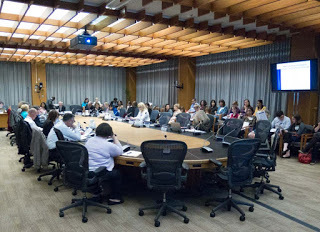
In addition to the new public members, the IACC will have a new chair when it reconvenes. Dr. Thomas Insel, who served as the Director of the National Institute of Mental Health (NIMH) and as Chair of the committee for more than a decade, announced his planned departure for Google Life Sciences in at the end of October 2015. Dr. Bruce Cuthbert, who will become Acting Director of NIMH on November 1, has been appointed to serve as the IACC Chair over the next year.Autism research, services, and advocacy organizations represented by new and returning appointees to the committee include: Association of University Centers on Disabilities, Arc of the United States, Autism Science Foundation, Autism Speaks, Autism Society, Simons Foundation, and Autistic Self Advocacy Network. Federal departments and agencies represented on the committee include several agencies within HHS: Administration for Children and Families, Administration for Community Living, Agency for Healthcare Research and Quality, Centers for Disease Control and Prevention, Centers for Medicare & Medicaid Services, Food and Drug Administration, Health Resources and Services Administration, and National Institutes of Health; as well as Department of Education, Environmental Protection Agency, and Department of Defense .The responsibilities of the committee include annually updating the IACC Strategic Plan for ASD, preparing an annual summary of advances in ASD research, monitoring federal ASD activities, and providing guidance to the HHS Secretary on matters related to ASD. The public members appointed by the Secretary to serve on the renewed IACC are:David Amaral, Ph.D.Dr. David Amaral is a new public member of the IACC. He is a Professor of Psychiatry, Behavioral Sciences and Neuroscience at the University of California, Davis. He is also Beneto Foundation Chair and Founding Research Director of the UC Davis MIND (Medical Investigation of Neurodevelopmental Disorders) Institute, and Director of the Autism BrainNet. Dr. Amaral conducts research on the neurobiology of ASD. He received a joint Ph.D. in psychology and neurobiology from the University of Rochester and carried out postdoctoral work at Washington University in neuroanatomy.James Ball, Ed.D., B.C.B.A.-D.Dr. Jim Ball has served on the IACC as a public member since 2012. He is a Board Certified Behavior Analyst (BCBA-D) and President and CEO of JB Autism Consulting. He has worked in the autism field for more than 25 years, providing educational, employment, and residential services to children and adults affected with autism. He is a Board member of the Autism Society's Board of Directors and is currently the Chair of the National Board. He received his Doctor of Education degree from Nova Southeastern University in Fort Lauderdale, Florida.Samantha Crane, J.D.Ms. Samantha Crane is a new public member of the IACC. She is Legal Director and Director of Public Policy at the Autistic Self Advocacy Network (ASAN) and an autistic self-advocate. Ms. Crane previously served as staff attorney at the Bazelon Center of Mental Health Law, focusing on enforcing the right to community integration as established by the Supreme Court in Olmstead v. L.C.. Ms. Crane holds a B.A. from Swarthmore College, with high honors, in Psychology, and she received her J.D. degree from Harvard Law School. Geraldine Dawson, Ph.D.Dr. Geraldine Dawson has served on the IACC as a public member since 2012. She is a Professor of Psychiatry and Behavioral Sciences in the Duke School of Medicine and a faculty member of the Duke Institute for Brain Sciences. Dr. Dawson also is Director of the Duke Center for Autism and Brain Development and President of the International Society for Autism Research. Dr. Dawson is a licensed clinical psychologist and researcher who has published extensively on ASD, focusing on early detection, intervention, and early brain development. She received her Ph.D. in Developmental Psychology with a minor in Child Clinical Psychology from the University of Washington and was a postdoctoral fellow at the University of California at Los Angeles. Amy Goodman, M.A.Ms. Amy Goodman is a new public member of the IACC. She is the Director of the Arc of the United States’ Autism NOW Resource and Information Center, which serves the needs of individuals with autism and their families. She is a self-advocate for individuals on the autism spectrum and holds a master’s degree in special education from Marshall University in West Virginia.Shannon Haworth, M.A. Ms. Shannon Haworth is a new public member of the IACC. She is the Public Health Program Manager for the Public Health team at Association of University Centers on Disabilities (AUCD) and a parent of a child on the autism spectrum. She has a master’s degree in Applied Behavior Analysis and a graduate certificate in Autism from Ball State University. She has also earned a Post Baccalaureate Graduate Certificate in Disability Leadership from Virginia Commonwealth University, is currently a doctoral candidate (DrPH) studying Public Health at Walden University, and is a certified Early Intervention Specialist for the state of Virginia.David Mandell, Sc.D.Dr. David Mandell has served on the IACC as a public member since 2012. He is an Associate Professor of Psychiatry and Pediatrics at the University of Pennsylvania's School of Medicine. He is a health services researcher and psychiatric epidemiologist whose work focuses on identifying the best ways to organize, finance and deliver services to children with autism and other psychiatric and developmental disabilities. Dr. Mandell holds a Bachelor of Arts in psychology from Columbia University and a Doctor of Science from the Johns Hopkins School of Hygiene and Public Health.Brian Parnell, M.S.W., C.S.W.Mr. Brian Parnell is a new public member of the IACC. He has led a distinguished career in child welfare and disabilities services and as an administrator of public and nonprofit agencies, having supervised and managed social service programs for more than 20 years. Mr. Parnell currently works at the Utah Division of Services for People with Disabilities, Department of Human Services, and helped develop Utah’s Medicaid Autism Waiver program. Mr. Parnell is a parent of seven children, three of whom are on the autism spectrum.Kevin Pelphrey, Ph.D.Dr. Kevin Pelphrey is a new public member of the IACC. He is the Harris Professor in the Child Study Center and Professor of Psychology at Yale University and Director of the Yale Center for Translational Developmental Neuroscience. He also is the father of two children on the autism spectrum. Dr. Pelphrey's research focuses on the development of brain mechanisms for social cognition in children with and without ASD. He also is the Principal Investigator for a federally-funded multisite Autism Center for Excellence, “Multimodal Developmental Neurogenetics of Females with ASD.” Dr. Pelphrey received his Ph.D. in Psychology from the University of North Carolina at Chapel Hill.Edlyn Peña, Ph.D. Dr. Edlyn Peña is a new public member of the IACC. She is an Assistant Professor of Higher Education Leadership at California Lutheran University (CLU) and is a parent of a child on the autism spectrum. Dr. Peña’s research focuses on social justice issues for ethnic/racial minorities and students with autism and other developmental disabilities in higher education. She earned her Ph.D. in Education with a concentration in Higher Education from the University of Southern California. Louis Reichardt, Ph.D.Dr. Louis Reichardt is a new member of the IACC. He is the Director of the Simons Foundation Autism Research Initiative (SFARI), whose goal is to improve the understanding, diagnosis, and treatment of ASD by funding innovative, high quality research. Prior to this, he was a Professor of Physiology and Biochemistry & Biophysics at the University of California, San Francisco, where he directed its neuroscience graduate program and Herbert W. Boyer Program in Biological Sciences. His research has focused on neurotrophins, a family of proteins that play a key role in brain development and function. Dr. Reichardt was a Fulbright scholar and earned his undergraduate degree from Harvard University and a Ph.D. in Biochemistry from Stanford University.Robert Ring, Ph.D.Dr. Robert Ring has served on the IACC as a public member since 2014. He is the Chief Science Officer (CSO) for Autism Speaks, the largest autism science and advocacy organization in the U.S. Dr. Ring is responsible for leading the science program at Autism Speaks, which features a diverse portfolio of research investments targeting medical research on the underlying biology of ASD, diagnosis, treatment, etiology, public health, and innovative technologies. Dr. Ring holds adjunct faculty appointments in the Department of Psychiatry at Mount Sinai School of Medicine (New York) and the Department of Pharmacology and Physiology at Drexel University College of Medicine (Philadelphia). He holds a Ph.D. in Molecular Neurobiology from City of Hope National Medical Center in Southern California.John Elder RobisonMr. John Elder Robison has served on the IACC as a public member since 2012. He is the Neurodiversity Scholar in Residence at the College of William & Mary in Williamsburg, Virginia, where he teaches courses on neurodiversity and living with autism. He is an autistic adult who is best known for working to increase public understanding of autism, and he is the author of several popular books about living life with autism, including Look Me in the Eye, My Life with Asperger's, Be Different: Adventures of a Free-Range Aspergian, and Raising Cubby. Alison Singer, M.B.A.Ms. Alison Singer has served on the IACC as a public member since 2007. She is Co-Founder and President of the Autism Science Foundation, a not-for-profit organization launched in April 2009 to support autism research by providing funding and other assistance to scientists and organizations conducting, facilitating, publicizing, and disseminating autism research. Ms. Singer is the mother of a daughter with autism and legal guardian of her adult brother with autism. Ms. Singer graduated magna cum laude from Yale University with a B.A. in Economics and has an M.B.A. from Harvard Business School.Julie Lounds Taylor, Ph.D.Dr. Julie Lounds Taylor is a new public member of the IACC. Dr. Taylor is an assistant professor of Pediatrics and Special Education at Vanderbilt University and an Investigator at the Vanderbilt Kennedy Center. Her research focuses on factors that promote a positive transition to adulthood for individuals with ASD and their families, as well as the impact of having a sibling with an intellectual or developmental disability. She has published research on a variety of autism and disability services-related issues, including sex and gender differences, peer victimization, transition planning, secondary education and vocational training, employment, and daily life skills for people on the autism spectrum. Dr. Taylor earned her Ph.D. in developmental psychology at the University of Notre Dame.***The IACC is a Federal advisory committee that was created by Congress in an effort to accelerate progress in ASD research and services. The IACC works to improve coordination and communication across the Federal government and work in partnership with the autism community. The Committee is composed of officials from many different Federal agencies involved in autism research and services, as well as adults on the autism spectrum, parents and family members of individuals on the autism spectrum, advocates, researchers, providers, and other members of the autism community. The documents and recommendations produced by the IACC reflect the views of the Committee as an independent advisory body and the expertise of the members of the Committee, but do not represent the views, official statements, policies or positions of the Federal government. For more information on the IACC, please visit:www.iacc.hhs.gov.(c) 2007-2011 John Elder Robison

In addition to the new public members, the IACC will have a new chair when it reconvenes. Dr. Thomas Insel, who served as the Director of the National Institute of Mental Health (NIMH) and as Chair of the committee for more than a decade, announced his planned departure for Google Life Sciences in at the end of October 2015. Dr. Bruce Cuthbert, who will become Acting Director of NIMH on November 1, has been appointed to serve as the IACC Chair over the next year.Autism research, services, and advocacy organizations represented by new and returning appointees to the committee include: Association of University Centers on Disabilities, Arc of the United States, Autism Science Foundation, Autism Speaks, Autism Society, Simons Foundation, and Autistic Self Advocacy Network. Federal departments and agencies represented on the committee include several agencies within HHS: Administration for Children and Families, Administration for Community Living, Agency for Healthcare Research and Quality, Centers for Disease Control and Prevention, Centers for Medicare & Medicaid Services, Food and Drug Administration, Health Resources and Services Administration, and National Institutes of Health; as well as Department of Education, Environmental Protection Agency, and Department of Defense .The responsibilities of the committee include annually updating the IACC Strategic Plan for ASD, preparing an annual summary of advances in ASD research, monitoring federal ASD activities, and providing guidance to the HHS Secretary on matters related to ASD. The public members appointed by the Secretary to serve on the renewed IACC are:David Amaral, Ph.D.Dr. David Amaral is a new public member of the IACC. He is a Professor of Psychiatry, Behavioral Sciences and Neuroscience at the University of California, Davis. He is also Beneto Foundation Chair and Founding Research Director of the UC Davis MIND (Medical Investigation of Neurodevelopmental Disorders) Institute, and Director of the Autism BrainNet. Dr. Amaral conducts research on the neurobiology of ASD. He received a joint Ph.D. in psychology and neurobiology from the University of Rochester and carried out postdoctoral work at Washington University in neuroanatomy.James Ball, Ed.D., B.C.B.A.-D.Dr. Jim Ball has served on the IACC as a public member since 2012. He is a Board Certified Behavior Analyst (BCBA-D) and President and CEO of JB Autism Consulting. He has worked in the autism field for more than 25 years, providing educational, employment, and residential services to children and adults affected with autism. He is a Board member of the Autism Society's Board of Directors and is currently the Chair of the National Board. He received his Doctor of Education degree from Nova Southeastern University in Fort Lauderdale, Florida.Samantha Crane, J.D.Ms. Samantha Crane is a new public member of the IACC. She is Legal Director and Director of Public Policy at the Autistic Self Advocacy Network (ASAN) and an autistic self-advocate. Ms. Crane previously served as staff attorney at the Bazelon Center of Mental Health Law, focusing on enforcing the right to community integration as established by the Supreme Court in Olmstead v. L.C.. Ms. Crane holds a B.A. from Swarthmore College, with high honors, in Psychology, and she received her J.D. degree from Harvard Law School. Geraldine Dawson, Ph.D.Dr. Geraldine Dawson has served on the IACC as a public member since 2012. She is a Professor of Psychiatry and Behavioral Sciences in the Duke School of Medicine and a faculty member of the Duke Institute for Brain Sciences. Dr. Dawson also is Director of the Duke Center for Autism and Brain Development and President of the International Society for Autism Research. Dr. Dawson is a licensed clinical psychologist and researcher who has published extensively on ASD, focusing on early detection, intervention, and early brain development. She received her Ph.D. in Developmental Psychology with a minor in Child Clinical Psychology from the University of Washington and was a postdoctoral fellow at the University of California at Los Angeles. Amy Goodman, M.A.Ms. Amy Goodman is a new public member of the IACC. She is the Director of the Arc of the United States’ Autism NOW Resource and Information Center, which serves the needs of individuals with autism and their families. She is a self-advocate for individuals on the autism spectrum and holds a master’s degree in special education from Marshall University in West Virginia.Shannon Haworth, M.A. Ms. Shannon Haworth is a new public member of the IACC. She is the Public Health Program Manager for the Public Health team at Association of University Centers on Disabilities (AUCD) and a parent of a child on the autism spectrum. She has a master’s degree in Applied Behavior Analysis and a graduate certificate in Autism from Ball State University. She has also earned a Post Baccalaureate Graduate Certificate in Disability Leadership from Virginia Commonwealth University, is currently a doctoral candidate (DrPH) studying Public Health at Walden University, and is a certified Early Intervention Specialist for the state of Virginia.David Mandell, Sc.D.Dr. David Mandell has served on the IACC as a public member since 2012. He is an Associate Professor of Psychiatry and Pediatrics at the University of Pennsylvania's School of Medicine. He is a health services researcher and psychiatric epidemiologist whose work focuses on identifying the best ways to organize, finance and deliver services to children with autism and other psychiatric and developmental disabilities. Dr. Mandell holds a Bachelor of Arts in psychology from Columbia University and a Doctor of Science from the Johns Hopkins School of Hygiene and Public Health.Brian Parnell, M.S.W., C.S.W.Mr. Brian Parnell is a new public member of the IACC. He has led a distinguished career in child welfare and disabilities services and as an administrator of public and nonprofit agencies, having supervised and managed social service programs for more than 20 years. Mr. Parnell currently works at the Utah Division of Services for People with Disabilities, Department of Human Services, and helped develop Utah’s Medicaid Autism Waiver program. Mr. Parnell is a parent of seven children, three of whom are on the autism spectrum.Kevin Pelphrey, Ph.D.Dr. Kevin Pelphrey is a new public member of the IACC. He is the Harris Professor in the Child Study Center and Professor of Psychology at Yale University and Director of the Yale Center for Translational Developmental Neuroscience. He also is the father of two children on the autism spectrum. Dr. Pelphrey's research focuses on the development of brain mechanisms for social cognition in children with and without ASD. He also is the Principal Investigator for a federally-funded multisite Autism Center for Excellence, “Multimodal Developmental Neurogenetics of Females with ASD.” Dr. Pelphrey received his Ph.D. in Psychology from the University of North Carolina at Chapel Hill.Edlyn Peña, Ph.D. Dr. Edlyn Peña is a new public member of the IACC. She is an Assistant Professor of Higher Education Leadership at California Lutheran University (CLU) and is a parent of a child on the autism spectrum. Dr. Peña’s research focuses on social justice issues for ethnic/racial minorities and students with autism and other developmental disabilities in higher education. She earned her Ph.D. in Education with a concentration in Higher Education from the University of Southern California. Louis Reichardt, Ph.D.Dr. Louis Reichardt is a new member of the IACC. He is the Director of the Simons Foundation Autism Research Initiative (SFARI), whose goal is to improve the understanding, diagnosis, and treatment of ASD by funding innovative, high quality research. Prior to this, he was a Professor of Physiology and Biochemistry & Biophysics at the University of California, San Francisco, where he directed its neuroscience graduate program and Herbert W. Boyer Program in Biological Sciences. His research has focused on neurotrophins, a family of proteins that play a key role in brain development and function. Dr. Reichardt was a Fulbright scholar and earned his undergraduate degree from Harvard University and a Ph.D. in Biochemistry from Stanford University.Robert Ring, Ph.D.Dr. Robert Ring has served on the IACC as a public member since 2014. He is the Chief Science Officer (CSO) for Autism Speaks, the largest autism science and advocacy organization in the U.S. Dr. Ring is responsible for leading the science program at Autism Speaks, which features a diverse portfolio of research investments targeting medical research on the underlying biology of ASD, diagnosis, treatment, etiology, public health, and innovative technologies. Dr. Ring holds adjunct faculty appointments in the Department of Psychiatry at Mount Sinai School of Medicine (New York) and the Department of Pharmacology and Physiology at Drexel University College of Medicine (Philadelphia). He holds a Ph.D. in Molecular Neurobiology from City of Hope National Medical Center in Southern California.John Elder RobisonMr. John Elder Robison has served on the IACC as a public member since 2012. He is the Neurodiversity Scholar in Residence at the College of William & Mary in Williamsburg, Virginia, where he teaches courses on neurodiversity and living with autism. He is an autistic adult who is best known for working to increase public understanding of autism, and he is the author of several popular books about living life with autism, including Look Me in the Eye, My Life with Asperger's, Be Different: Adventures of a Free-Range Aspergian, and Raising Cubby. Alison Singer, M.B.A.Ms. Alison Singer has served on the IACC as a public member since 2007. She is Co-Founder and President of the Autism Science Foundation, a not-for-profit organization launched in April 2009 to support autism research by providing funding and other assistance to scientists and organizations conducting, facilitating, publicizing, and disseminating autism research. Ms. Singer is the mother of a daughter with autism and legal guardian of her adult brother with autism. Ms. Singer graduated magna cum laude from Yale University with a B.A. in Economics and has an M.B.A. from Harvard Business School.Julie Lounds Taylor, Ph.D.Dr. Julie Lounds Taylor is a new public member of the IACC. Dr. Taylor is an assistant professor of Pediatrics and Special Education at Vanderbilt University and an Investigator at the Vanderbilt Kennedy Center. Her research focuses on factors that promote a positive transition to adulthood for individuals with ASD and their families, as well as the impact of having a sibling with an intellectual or developmental disability. She has published research on a variety of autism and disability services-related issues, including sex and gender differences, peer victimization, transition planning, secondary education and vocational training, employment, and daily life skills for people on the autism spectrum. Dr. Taylor earned her Ph.D. in developmental psychology at the University of Notre Dame.***The IACC is a Federal advisory committee that was created by Congress in an effort to accelerate progress in ASD research and services. The IACC works to improve coordination and communication across the Federal government and work in partnership with the autism community. The Committee is composed of officials from many different Federal agencies involved in autism research and services, as well as adults on the autism spectrum, parents and family members of individuals on the autism spectrum, advocates, researchers, providers, and other members of the autism community. The documents and recommendations produced by the IACC reflect the views of the Committee as an independent advisory body and the expertise of the members of the Committee, but do not represent the views, official statements, policies or positions of the Federal government. For more information on the IACC, please visit:www.iacc.hhs.gov.(c) 2007-2011 John Elder Robison

Published on October 28, 2015 15:25
October 27, 2015
A Ship in Distress
The ship was the pride of Papua New Guinea’s fishing fleet – 229 feet long and 1,200 gross tons. Spotless, new, and glittering white. Just one year old, Glory Pacific No. 8 was fresh out of China’s Jinglu Ship Industry yards. She carried a crew of 35 under a Taiwanese master, Capt. Cheng Li Wu, sailing 2,000 miles from her homeport of Port Moresby in pursuit of the great tuna.

We Americans tend to take our Star Kist for granted, but before it can be packed and sold in cans, the meat must be extracted from fish, who are caught and pulled from the sea by fishermen like these. As the seas close to shore get fished out, boats sail farther and farther afield in search of tomorrow’s tuna sandwich and cat food.
These purse seiners were working the waters northeast of Tokelau, a small island about 200 miles north of American Samoa. Looking on a globe the area looks like empty deep ocean but it’s actually mile-deep water speckled with reefs and atolls and the occasional lost ship or airplane.
Deepwater fishing boats have been working this area for thirty years, with more fisherman on station every season. But outside of those folks, and the occasional yachtsman, the area remains largely unknown to westerners. The closest most people ever come is seven miles away – as they pass overhead in a jet to New Zealand or Australia.
It’s a remote place to be, when something goes wrong. Of course, nothing should go wrong in a new ship, but sometimes . . . Late in the day on October 24 the generator stopped. All the ship’s systems run on electricity, so that was bad news, and it quickly got worse. The generator had shorted internally, and caught fire. The fire spread, and soon the whole engine room was burning. In a matter of minutes that whole part of the ship was in flames and the master was sending out distress calls as the crew prepared to abandon ship.
In the beginning distress calls went across the water by morse code, via shortwave radio. Glory Pacific’s plea for help went straight up on microwaves, to the INMARSAT marine satellite communication network, who bounced their message earthward to the Maritime Rescue Coordination Centre outside of Wellington, New Zealand.
The New Zealanders respond to over 1,200 distress calls each year, so they knew what to do. The Glory Pacific was at the extreme edge of their coverage, in the area where search responsibility is shared with the District 14 of the US Coast Guard, based in Hawaii.
The burning ship was 2,500 miles from Wellington and 2,300 miles from Barbers Point air station in Hawaii. But the deciding factor for air support was readiness – the American Coasties had a HC130 Hercules ocean search plane ready to go and they sent it south with a crew and supplies within minutes of the call from New Zealand.
Meanwhile the ship continued to burn out of control. In olden days, wood hull ships burned through, filled with water and sank. Today's steel ships are more resistant to sinking but everything inside the hull can still burn to a crisp. And with the engine room on fire, there's no power to operate firefighting pumps so there is almost nothing the crew can do but flee.
Seeing that reality the crew took to rafts, which they tied together in a line. They stayed close to their ship, but not too close, and activated their emergency position beacon, which sent its own signals to the satellite constellation. That position data was relayed to the Coast Guard, who passed the search coordinates to the boat.
After almost eight hours of flight they HC130 crew reached the area. Oftentimes rescue crews had to fly a search pattern to find the ship and crew but thanks to the emergency position data they spotted the burning ship right away. Darkness was falling as they flew low to drop water and flares to the sailors. The patrol plane was surely a welcome sight, even if it couldn’t land and carry them away. The plane would continue to circle until they were rescued.
As the plane was en route the folks at RCC New Zealand had been searching the area for possible rescue ships. Knowing they may need help at any time, many commercial vessels participate in the Automated (computerized) Mutual-assistance VEssel Rescue System, otherwise known as AMVER. The system was originally established to assist sailors in the Atlantic but for the past 20-some years it’s grown to a worldwide network; one that a majority of large commercials ships participate in.
New Zealand dispatchers used that system to identify and alert the Marshall Islands fishing vessel Lovalo, who sailed to the scene and picked up the crew just before dawn. They held them till they could be transferred to Pacific Journey No. 1, another Port Moresby-based tuna boat that was fishing a few hundred miles away.
Thanks to modern technology and the efforts of RCC New Zealand, the US Coast Guard, and the crews of Lovalo and Pacific Journey, the entire 36 man crew was rescued unharmed. As I write this the Glory Pacific remains adrift, as the fire burns itself out. The ship’s owner’s have contracted a salvage firm to find the vessel and tow it to New Zealand – the nearest port with repair facilities.
After the sailors were rescued the Coast Guard crew flew their HC130 Hercules south to Pago Pago, American Samoa, the nearest place where they could rest and refuel. The plane and crew covered 4,530 mission miles before the 2,500 mile return flight to Hawaii.
The whole thing was even captured on film, which you can seehere thanks to the US Coast Guard.
Read more about Maritime New Zealand here
(c) 2007-2011 John Elder Robison

We Americans tend to take our Star Kist for granted, but before it can be packed and sold in cans, the meat must be extracted from fish, who are caught and pulled from the sea by fishermen like these. As the seas close to shore get fished out, boats sail farther and farther afield in search of tomorrow’s tuna sandwich and cat food.
These purse seiners were working the waters northeast of Tokelau, a small island about 200 miles north of American Samoa. Looking on a globe the area looks like empty deep ocean but it’s actually mile-deep water speckled with reefs and atolls and the occasional lost ship or airplane.
Deepwater fishing boats have been working this area for thirty years, with more fisherman on station every season. But outside of those folks, and the occasional yachtsman, the area remains largely unknown to westerners. The closest most people ever come is seven miles away – as they pass overhead in a jet to New Zealand or Australia.
It’s a remote place to be, when something goes wrong. Of course, nothing should go wrong in a new ship, but sometimes . . . Late in the day on October 24 the generator stopped. All the ship’s systems run on electricity, so that was bad news, and it quickly got worse. The generator had shorted internally, and caught fire. The fire spread, and soon the whole engine room was burning. In a matter of minutes that whole part of the ship was in flames and the master was sending out distress calls as the crew prepared to abandon ship.
In the beginning distress calls went across the water by morse code, via shortwave radio. Glory Pacific’s plea for help went straight up on microwaves, to the INMARSAT marine satellite communication network, who bounced their message earthward to the Maritime Rescue Coordination Centre outside of Wellington, New Zealand.
The New Zealanders respond to over 1,200 distress calls each year, so they knew what to do. The Glory Pacific was at the extreme edge of their coverage, in the area where search responsibility is shared with the District 14 of the US Coast Guard, based in Hawaii.
The burning ship was 2,500 miles from Wellington and 2,300 miles from Barbers Point air station in Hawaii. But the deciding factor for air support was readiness – the American Coasties had a HC130 Hercules ocean search plane ready to go and they sent it south with a crew and supplies within minutes of the call from New Zealand.
Meanwhile the ship continued to burn out of control. In olden days, wood hull ships burned through, filled with water and sank. Today's steel ships are more resistant to sinking but everything inside the hull can still burn to a crisp. And with the engine room on fire, there's no power to operate firefighting pumps so there is almost nothing the crew can do but flee.
Seeing that reality the crew took to rafts, which they tied together in a line. They stayed close to their ship, but not too close, and activated their emergency position beacon, which sent its own signals to the satellite constellation. That position data was relayed to the Coast Guard, who passed the search coordinates to the boat.
After almost eight hours of flight they HC130 crew reached the area. Oftentimes rescue crews had to fly a search pattern to find the ship and crew but thanks to the emergency position data they spotted the burning ship right away. Darkness was falling as they flew low to drop water and flares to the sailors. The patrol plane was surely a welcome sight, even if it couldn’t land and carry them away. The plane would continue to circle until they were rescued.
As the plane was en route the folks at RCC New Zealand had been searching the area for possible rescue ships. Knowing they may need help at any time, many commercial vessels participate in the Automated (computerized) Mutual-assistance VEssel Rescue System, otherwise known as AMVER. The system was originally established to assist sailors in the Atlantic but for the past 20-some years it’s grown to a worldwide network; one that a majority of large commercials ships participate in.
New Zealand dispatchers used that system to identify and alert the Marshall Islands fishing vessel Lovalo, who sailed to the scene and picked up the crew just before dawn. They held them till they could be transferred to Pacific Journey No. 1, another Port Moresby-based tuna boat that was fishing a few hundred miles away.
Thanks to modern technology and the efforts of RCC New Zealand, the US Coast Guard, and the crews of Lovalo and Pacific Journey, the entire 36 man crew was rescued unharmed. As I write this the Glory Pacific remains adrift, as the fire burns itself out. The ship’s owner’s have contracted a salvage firm to find the vessel and tow it to New Zealand – the nearest port with repair facilities.
After the sailors were rescued the Coast Guard crew flew their HC130 Hercules south to Pago Pago, American Samoa, the nearest place where they could rest and refuel. The plane and crew covered 4,530 mission miles before the 2,500 mile return flight to Hawaii.
The whole thing was even captured on film, which you can seehere thanks to the US Coast Guard.
Read more about Maritime New Zealand here
(c) 2007-2011 John Elder Robison

Published on October 27, 2015 08:23
October 13, 2015
The Challenges of Neurodiversity in Colleges
I’m very proud of William & Mary’s neurodiversity initiative. I’m even prouder to see other schools following our lead. Making college campuses more accepting of the neurodiverse is an important step toward making a more ND-friendly world.
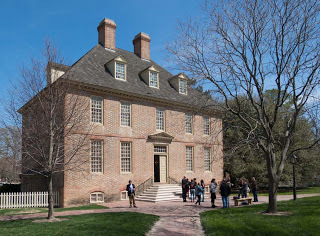
It’s time for neurodiverse faculty to come out, and stand as role models for students and staff. Everyone knows how autism, ADHD, dyslexia and other neurodiverse conditions disable us as children. What we need to balance that are successful adults who attribute their achievements in part to neurodiversity.
In doing so, we demonstrate that there is a spectrum for all the neurodiverse conditions. Some of us are more gifted; others are more disabled. In particular, many of us follow a pattern where we are less disabled the older we get as we learn to adapt to society and use our strengths to offset our weaknesses.
Neurodiverse folks who are enrolled or employed in colleges may be the least disabled of our community, or we may just be the most determined. Or maybe we're just lucky or privileged. Either way, we should be standing as role models - particularly for younger people and parents - to show what's possible. That's the best antidote to talk like "He's autistic; he'll never go to college." While its true that profound disability will leave some of us requiring substantial supports and residential care even as adults, most of us can grow up to live independently and we have great contributions to make.
But many societal hurdles stand in our way, and it's up to this generation to knock them down. We also have medical and psychological challenges, and it's up to us to lead the effort to develop the therapies and treatments we need. Who better than us to articulate our needs and steer the needed research?
Unfortunately, it’s not so easy to get college staffers to come out, as this letter demonstrates:
Dear Mr. Robison - As an Adjunct Instructor at the ____________, I've had the unfortunate opportunity to witness instructors & administrators demonstrate bias against autistic students. I need advice. I want to speak with the Dean of Academics about this institutional problem. However, I'm concerned that I may not be invited back to teach. Do you have any experience with this sort of challenge?
How can we expect faculty to announce their own neurodiversity when they see discrimination against neurodiverse people? I would not have fear about speaking out at William & Mary, because neurodiversity advocacy is my role. But even here at this college, with a provost who's a vocal advocate of our mission, faculty tell me they are afraid to come out, as in this exchange:
“Even with the neurodiversity initiative, and the talk about neurodiversity being good, I’m still afraid coming out could jeopardize my promotion from assistant professor. I want to help you but I have to look out for my career and family.”
What’s the answer to this dilemma? I believe it comes down to courage and passion. We must be brave enough to announce our neurodiversity to the world, knowing some will embrace us but others will discriminate against us. We must speak up even knowing there may be a personal cost before there is a collective gain. And that’s where passion comes in – we must believe in our cause so much that we push through the negative personal consequences in pursuit of a greater goal for all.
On college campuses, we must recognize that there are barriers to both students and staff coming out, and we should encourage both.
What are some thoughts for bringing this about?
John Elder Robison
All words and images (c) 2015 John Elder Robison
John Elder Robison is an autistic adult and advocate for people with neurological differences. He's the author of Look Me in the Eye, Be Different, Raising Cubby, and the forthcoming Switched On. He's served on the Interagency Autism Coordinating Committee of the US Dept of Health and Human Services and many other autism-related boards. He's co-founder of the TCS Auto Program (A school for teens with developmental challenges) and he’s the Neurodiversity Scholar in Residence at the College of William & Mary in Williamsburg, Virginia.
The opinions expressed here are his own. There is no warranty expressed or implied. While reading this essay may give you food for thought, actually printing and eating it may make you sick.(c) 2007-2011 John Elder Robison

It’s time for neurodiverse faculty to come out, and stand as role models for students and staff. Everyone knows how autism, ADHD, dyslexia and other neurodiverse conditions disable us as children. What we need to balance that are successful adults who attribute their achievements in part to neurodiversity.
In doing so, we demonstrate that there is a spectrum for all the neurodiverse conditions. Some of us are more gifted; others are more disabled. In particular, many of us follow a pattern where we are less disabled the older we get as we learn to adapt to society and use our strengths to offset our weaknesses.
Neurodiverse folks who are enrolled or employed in colleges may be the least disabled of our community, or we may just be the most determined. Or maybe we're just lucky or privileged. Either way, we should be standing as role models - particularly for younger people and parents - to show what's possible. That's the best antidote to talk like "He's autistic; he'll never go to college." While its true that profound disability will leave some of us requiring substantial supports and residential care even as adults, most of us can grow up to live independently and we have great contributions to make.
But many societal hurdles stand in our way, and it's up to this generation to knock them down. We also have medical and psychological challenges, and it's up to us to lead the effort to develop the therapies and treatments we need. Who better than us to articulate our needs and steer the needed research?
Unfortunately, it’s not so easy to get college staffers to come out, as this letter demonstrates:
Dear Mr. Robison - As an Adjunct Instructor at the ____________, I've had the unfortunate opportunity to witness instructors & administrators demonstrate bias against autistic students. I need advice. I want to speak with the Dean of Academics about this institutional problem. However, I'm concerned that I may not be invited back to teach. Do you have any experience with this sort of challenge?
How can we expect faculty to announce their own neurodiversity when they see discrimination against neurodiverse people? I would not have fear about speaking out at William & Mary, because neurodiversity advocacy is my role. But even here at this college, with a provost who's a vocal advocate of our mission, faculty tell me they are afraid to come out, as in this exchange:
“Even with the neurodiversity initiative, and the talk about neurodiversity being good, I’m still afraid coming out could jeopardize my promotion from assistant professor. I want to help you but I have to look out for my career and family.”
What’s the answer to this dilemma? I believe it comes down to courage and passion. We must be brave enough to announce our neurodiversity to the world, knowing some will embrace us but others will discriminate against us. We must speak up even knowing there may be a personal cost before there is a collective gain. And that’s where passion comes in – we must believe in our cause so much that we push through the negative personal consequences in pursuit of a greater goal for all.
On college campuses, we must recognize that there are barriers to both students and staff coming out, and we should encourage both.
What are some thoughts for bringing this about?
John Elder Robison
All words and images (c) 2015 John Elder Robison
John Elder Robison is an autistic adult and advocate for people with neurological differences. He's the author of Look Me in the Eye, Be Different, Raising Cubby, and the forthcoming Switched On. He's served on the Interagency Autism Coordinating Committee of the US Dept of Health and Human Services and many other autism-related boards. He's co-founder of the TCS Auto Program (A school for teens with developmental challenges) and he’s the Neurodiversity Scholar in Residence at the College of William & Mary in Williamsburg, Virginia.
The opinions expressed here are his own. There is no warranty expressed or implied. While reading this essay may give you food for thought, actually printing and eating it may make you sick.(c) 2007-2011 John Elder Robison

Published on October 13, 2015 07:15
September 7, 2015
Gladiator Combat at the Three County Fair
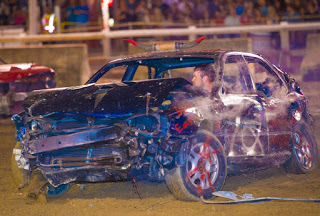
Demolition Derby. It’s the closest you can get to blood sport in the politically correct northeast, and it’s it right here at home. Kill-crazed drivers swarm the field in battered wrecks, bent on annihilation of their fellows. The last car rolling wins. Local farmers and merchants encourage their sons and daughters to compete, for family honor. They find themselves up against the spawn of criminals and outlaws, and the nature of the victor is always in doubt.
Finally the day comes for the Derby - the affair that will settle everything. Trucks converge on the fairgrounds with a fleet of cars, and the drivers and their supporters trickle in through the afternoon. The get read backstage as the field is readied by dragster tractor pulls and clowns.

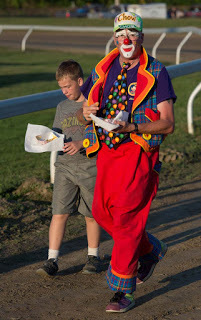
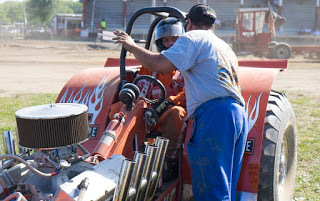
Everyone knows what's coming next. Meanwhile, the sun beats down and the teams other among their cars. Some hope, others wish, and a few prepare . . .
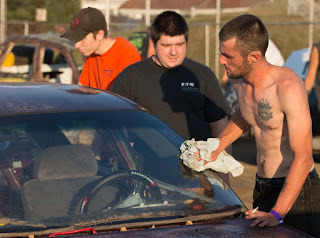
There was a time when drivers fortified themselves for the combat with whisky. Those that do so today, do it in secret. The only consumable liquids you'll see backfield are water and sweet drinks.
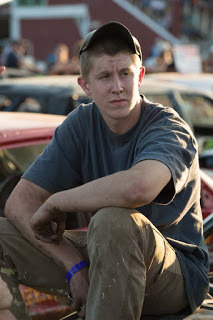
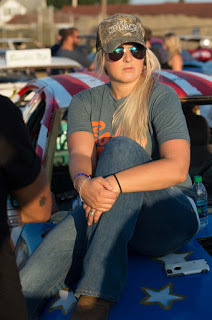
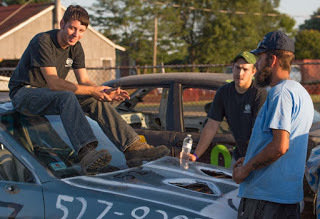

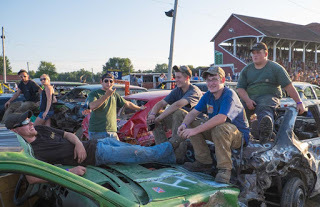
The situation is somewhat different for the fans, who have a beer emporium right across from the entrance to the grandstands. And there's food and drink for the kids everywhere you look. This is, after all, a country fair.
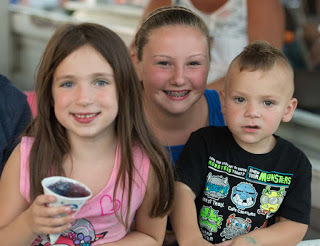
The grandstand seating sold out, with thousands of fans filling the stands, roaring louder with every new crash. Fun as that sounds, the best place to be is the box seats. There you are up close and personal, like the ringside seats in a boxing match.
Families put their kids out front, like bait for the drivers, where they shake their little arms and yell. By the end of the night the lucky ones are spattered with dirt from the field mixed with antifreeze and transmission fluid – the blood of beasts sacrificed on the field. All of them have a story to tell, and a few have souvenirs – pieces of car that fly into the seats when car hits the concrete barriers with particular emphasis.
Nothing stands between the fans and carnage but a few referees and some cabled concrete barriers.
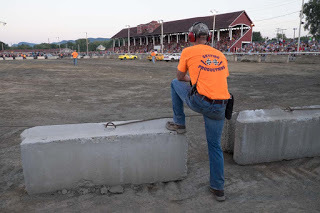
At Northampton they race on the old horse track, where the grandstands saw countless fillies running under the Labor Day Weekend sun, and the betting windows did a brisk business below. The betting is closed now, but when the beer if flowing and the cars are out there butting heads hard, you want to a pick favorite, and anything can happen . . .






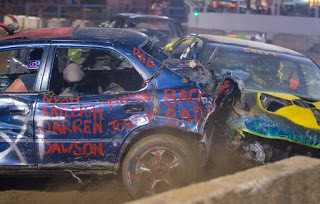

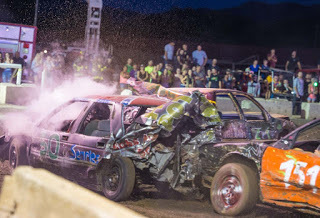
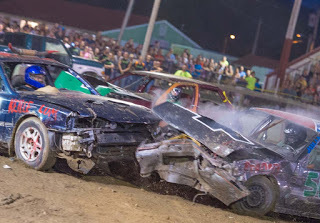
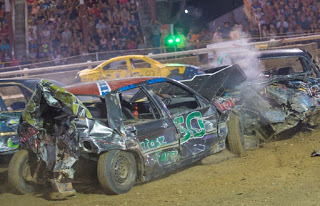
As day turns to dusk the carnage intensifies. Drivers are shrouded in smoke and fog of their own making and the track is marked with the blood of the four-wheeled beasts. Firemen stand ready, but mostly the competitors work things out among themselves.
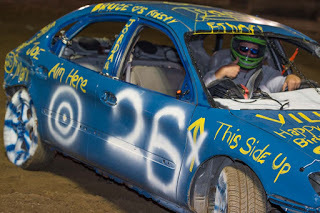
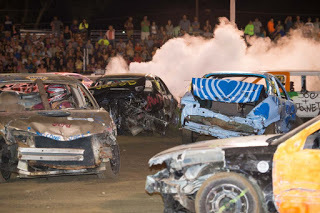

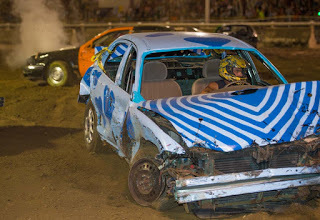



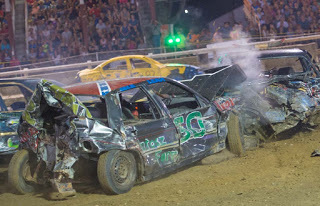
The spectacle starts with little cars and ends with the big bruiser V8s - Deathmobiles like the one made famous in the movie Animal House. When it's all over the survivors stand atop their cars as trucks haul away the bits of wreckage.
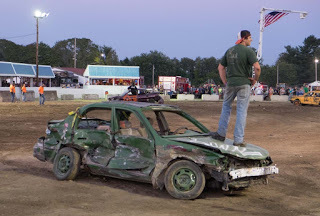
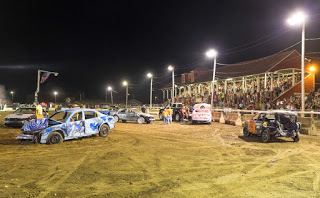
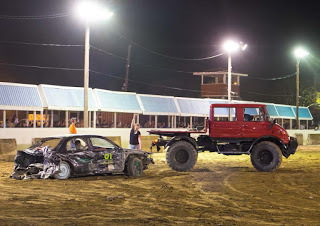
It’s an American tradition for sure, like deep fried Twinkies and sweet sausage grinders.
Words and pictures (c) 2015 John Elder Robison(c) 2007-2011 John Elder Robison

Published on September 07, 2015 14:37
August 23, 2015
A Journey through the Adirondacks and Northern New York
The road to Potsdam runs through the heart of New York’s Adirondack forest, which has become a place of ruins. The Adirondacks were once the playground where all New Yorkers went to vacation. The camps were filled with kids and parents, and the resorts were booming with couples and groups of all sorts. Not any more.
That said, with the humans subtracted it remains a place of wild and rugged beauty. It's home to some of the northernmost rattlesnake dens in North America.



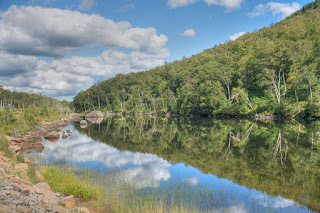
Nowadays, though, it's largely forgotten as New Yorkers go to Aspen – or even farther - and the opportunities closer to home are abandoned. First the resorts closed, and the great complexes like Grossinger’s were reclaimed by the woods. The campgrounds were closer to woods to begin with and they disappeared even faster.
Then went the people who served them. Whole communities depended on the tourist trade, and as it dried up, so went the means of support. Anyone who could moved away. Realtors put signs on the properties that were paid for, but there were not too many buyers. Banks foreclosed the properties that had debt, and they had even less luck with remarketing.
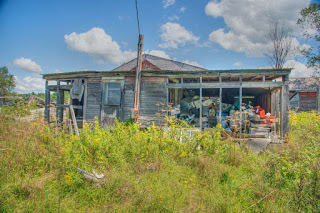
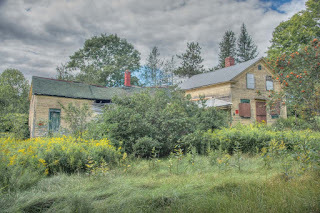
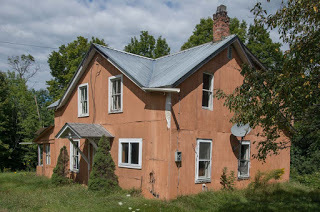
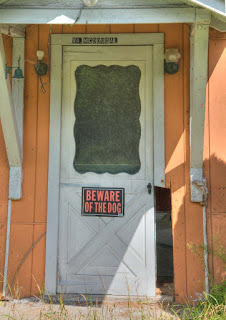
Some of the houses people abandoned were pretty grand. You wonder who they were, why they left, and where they went . . .
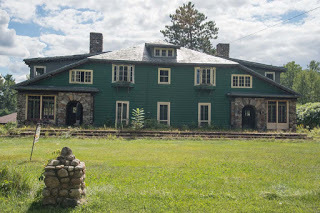
Today you drive wooded country roads, seemingly devoid of houses. But when you look close, you see they are in there, surrounded by trees. Some standing, others fallen down. It is impressive, how quickly nature reclaims its own.
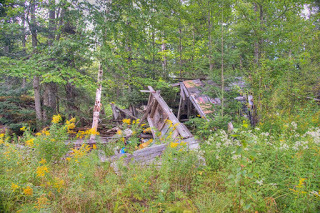
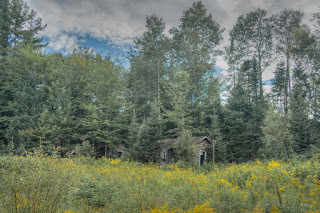
Then there are the roads themselves – the ones with pavement last longer. Dirt roads can vanish as fast as the camps they led to. Can you see the road in here?
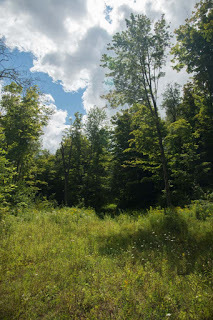
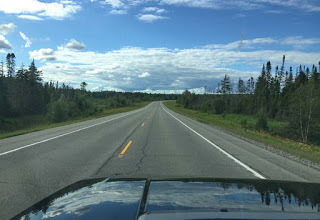
It should come as no surprise that abandonment has even touched the road maintenance, and infrastructure like dams and bridges . . . And the 2011 hurricane and flooding did its part, too . . .
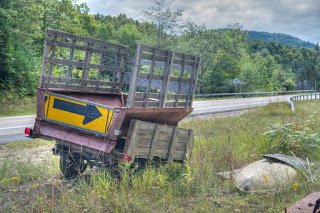

You need to be careful up north. Infrastructure has gone to seed, and what looked at a distance like a friendly gas station is now abandoned broken by man, and it's home to wolves and were-bears. God help you if you step too close to those doors late at night. A fellow across the street says the flag hangs there as bait, and I saw for myself how true that was. The screaming was unearthly.

There are places up there that make books like The Shining seem like kiddie stories. And you don't hear much about them because those who learn the truth never emerge. Your best advice - enter the country with a full tank of gas and a shotgun. Don't step out of the vehicle at night.

When you see those heavy grates welded over storm drains . . . that is not to keep you out. It's to keep THEM in.
Then, as you get father north, you come into farm country. Abandonment there too a different form. Half the farmers left, and abandoned or sold their holdings. The houses and many of the barns were left to their fate, and the land was worked by those who remained.
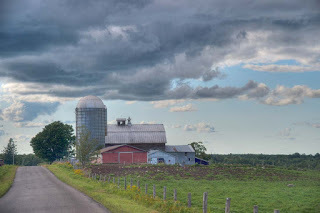
Closer to New York city these abandoned houses would be filled with the homeless, and with crack dealers. Up here, they are just empty. Mostly. And the ones that are not . . . you will surely wish they were if you make the mistake of walking inside.


In the northern towns there is a pattern of struggle, then abandonment. The working men and women who once populated this part of New York are leaving, to be replaced by transient college students at Clarkson, SUNY Potsdam, St Lawrence and a few other schools. Health care is big up here too, thanks to an older core population and rising health care costs.
Places like the 3 Bears Gluten Free Bakery are thriving, but you know times are tough when the tavern next door goes bust.
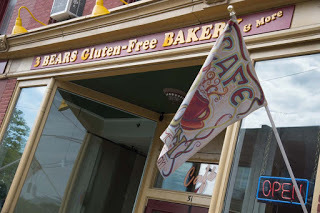
And for the rest . . .
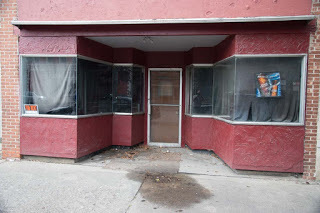
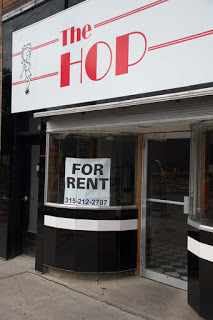
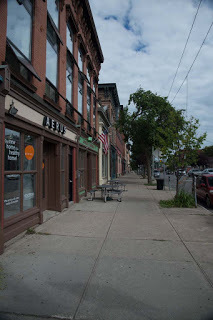
In some places abandoned storefronts would signal crime and danger. Here the people are mostly gone. Yet they still manage to leave their mark . . .
The strong smell of urine is the first thing that hits you as you approach then Potsdam Court. Then you see where the odor is concentrated – the collection box. Clearly the people of northern New York have brought more than money to show their regard for the state court.
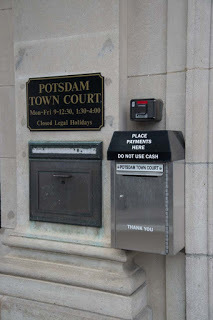
Then there is whimsy. A block up from the court, the Patron Saint of the Bathroom stands before his legions.
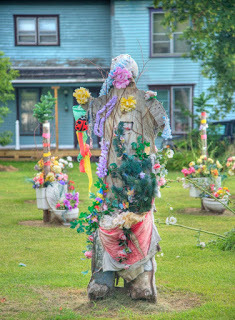
Potsdam is actually known far and wide for having a whole house lot devoted to the Art of the Urinal
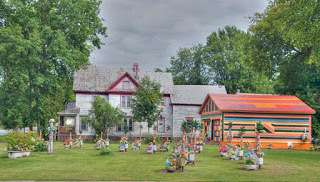


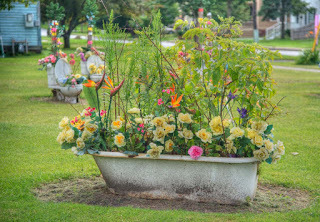

Until next time . . .
All words and images (c) 2015 John Elder Robison
John Elder Robison is an autistic adult and advocate for people with neurological differences. He's the author of Look Me in the Eye, Be Different, Raising Cubby, and the forthcoming Switched On. He's served on the Interagency Autism Coordinating Committee of the US Dept of Health and Human Services and many other autism-related boards. He's co-founder of the TCS Auto Program (A school for teens with developmental challenges) and he’s the Neurodiversity Scholar in Residence at the College of William & Mary in Williamsburg, Virginia.
The opinions expressed here are his own. There is no warranty expressed or implied. While reading this essay may give you food for thought, actually printing and eating it may make you sick.
(c) 2007-2011 John Elder Robison
That said, with the humans subtracted it remains a place of wild and rugged beauty. It's home to some of the northernmost rattlesnake dens in North America.




Nowadays, though, it's largely forgotten as New Yorkers go to Aspen – or even farther - and the opportunities closer to home are abandoned. First the resorts closed, and the great complexes like Grossinger’s were reclaimed by the woods. The campgrounds were closer to woods to begin with and they disappeared even faster.
Then went the people who served them. Whole communities depended on the tourist trade, and as it dried up, so went the means of support. Anyone who could moved away. Realtors put signs on the properties that were paid for, but there were not too many buyers. Banks foreclosed the properties that had debt, and they had even less luck with remarketing.




Some of the houses people abandoned were pretty grand. You wonder who they were, why they left, and where they went . . .

Today you drive wooded country roads, seemingly devoid of houses. But when you look close, you see they are in there, surrounded by trees. Some standing, others fallen down. It is impressive, how quickly nature reclaims its own.


Then there are the roads themselves – the ones with pavement last longer. Dirt roads can vanish as fast as the camps they led to. Can you see the road in here?


It should come as no surprise that abandonment has even touched the road maintenance, and infrastructure like dams and bridges . . . And the 2011 hurricane and flooding did its part, too . . .


You need to be careful up north. Infrastructure has gone to seed, and what looked at a distance like a friendly gas station is now abandoned broken by man, and it's home to wolves and were-bears. God help you if you step too close to those doors late at night. A fellow across the street says the flag hangs there as bait, and I saw for myself how true that was. The screaming was unearthly.

There are places up there that make books like The Shining seem like kiddie stories. And you don't hear much about them because those who learn the truth never emerge. Your best advice - enter the country with a full tank of gas and a shotgun. Don't step out of the vehicle at night.

When you see those heavy grates welded over storm drains . . . that is not to keep you out. It's to keep THEM in.
Then, as you get father north, you come into farm country. Abandonment there too a different form. Half the farmers left, and abandoned or sold their holdings. The houses and many of the barns were left to their fate, and the land was worked by those who remained.

Closer to New York city these abandoned houses would be filled with the homeless, and with crack dealers. Up here, they are just empty. Mostly. And the ones that are not . . . you will surely wish they were if you make the mistake of walking inside.


In the northern towns there is a pattern of struggle, then abandonment. The working men and women who once populated this part of New York are leaving, to be replaced by transient college students at Clarkson, SUNY Potsdam, St Lawrence and a few other schools. Health care is big up here too, thanks to an older core population and rising health care costs.
Places like the 3 Bears Gluten Free Bakery are thriving, but you know times are tough when the tavern next door goes bust.

And for the rest . . .



In some places abandoned storefronts would signal crime and danger. Here the people are mostly gone. Yet they still manage to leave their mark . . .
The strong smell of urine is the first thing that hits you as you approach then Potsdam Court. Then you see where the odor is concentrated – the collection box. Clearly the people of northern New York have brought more than money to show their regard for the state court.

Then there is whimsy. A block up from the court, the Patron Saint of the Bathroom stands before his legions.

Potsdam is actually known far and wide for having a whole house lot devoted to the Art of the Urinal





Until next time . . .
All words and images (c) 2015 John Elder Robison
John Elder Robison is an autistic adult and advocate for people with neurological differences. He's the author of Look Me in the Eye, Be Different, Raising Cubby, and the forthcoming Switched On. He's served on the Interagency Autism Coordinating Committee of the US Dept of Health and Human Services and many other autism-related boards. He's co-founder of the TCS Auto Program (A school for teens with developmental challenges) and he’s the Neurodiversity Scholar in Residence at the College of William & Mary in Williamsburg, Virginia.
The opinions expressed here are his own. There is no warranty expressed or implied. While reading this essay may give you food for thought, actually printing and eating it may make you sick.
(c) 2007-2011 John Elder Robison

Published on August 23, 2015 08:26



